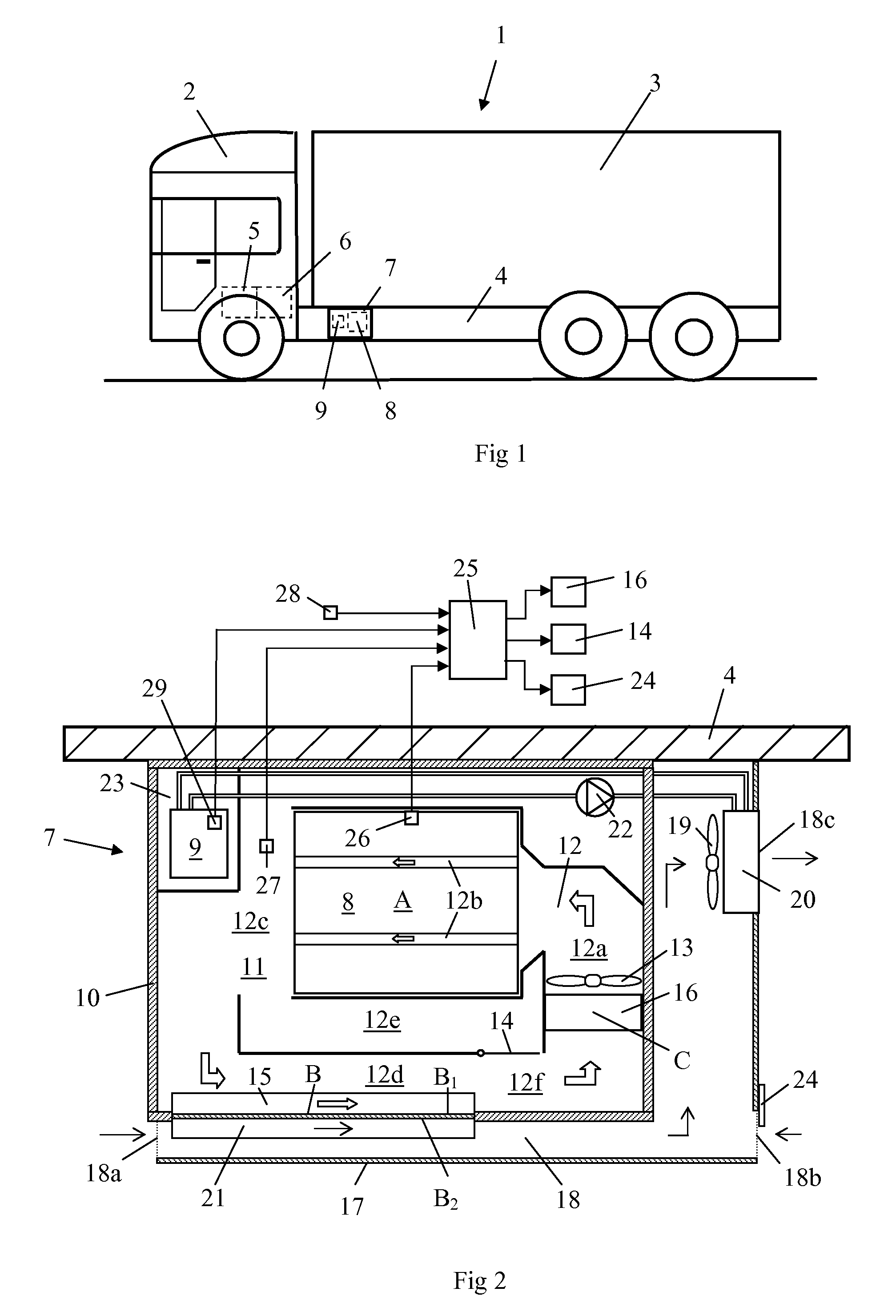Cooling arrangement for at least one battery in a vehicle
a technology for cooling arrangements and batteries, applied in battery/fuel cell control arrangements, cell components, electric devices, etc., can solve the problems of battery and regulating equipment being subject to a certain amount of warming, and battery consumption is relatively large, so as to ensure good cooling of the battery and minimal energy consumption
- Summary
- Abstract
- Description
- Claims
- Application Information
AI Technical Summary
Benefits of technology
Problems solved by technology
Method used
Image
Examples
Embodiment Construction
[0020]FIG. 1 depicts a freight vehicle 1 provided with a driver's space 2 and a cargo space 3. The bodywork of the freight vehicle 1 comprises longitudinal loadbearing members 4. The freight vehicle 1 is a hybrid vehicle powered by a schematically depicted combustion engine 5 or by a schematically depicted electrical machine 6. The electrical machine 6 serves as a motor when it powers the vehicle 1 by itself or in conjunction with the combustion engine 5. The electrical machine 6 serves as a generator in situations where the vehicle is being braked, in which case it can itself brake the vehicle up to a certain level of braking. At higher levels of braking the braking process is completed by the vehicle's ordinary brakes. A container device 7 is fastened on one of the loadbearing members 4. A battery 8 for storage of electrical energy and regulating equipment 9 which regulates the flow of electrical energy between the battery 8 and the electrical machine 6 are situated in the contain...
PUM
| Property | Measurement | Unit |
|---|---|---|
| temperature | aaaaa | aaaaa |
| temperatures | aaaaa | aaaaa |
| temperatures | aaaaa | aaaaa |
Abstract
Description
Claims
Application Information
 Login to View More
Login to View More - R&D
- Intellectual Property
- Life Sciences
- Materials
- Tech Scout
- Unparalleled Data Quality
- Higher Quality Content
- 60% Fewer Hallucinations
Browse by: Latest US Patents, China's latest patents, Technical Efficacy Thesaurus, Application Domain, Technology Topic, Popular Technical Reports.
© 2025 PatSnap. All rights reserved.Legal|Privacy policy|Modern Slavery Act Transparency Statement|Sitemap|About US| Contact US: help@patsnap.com



